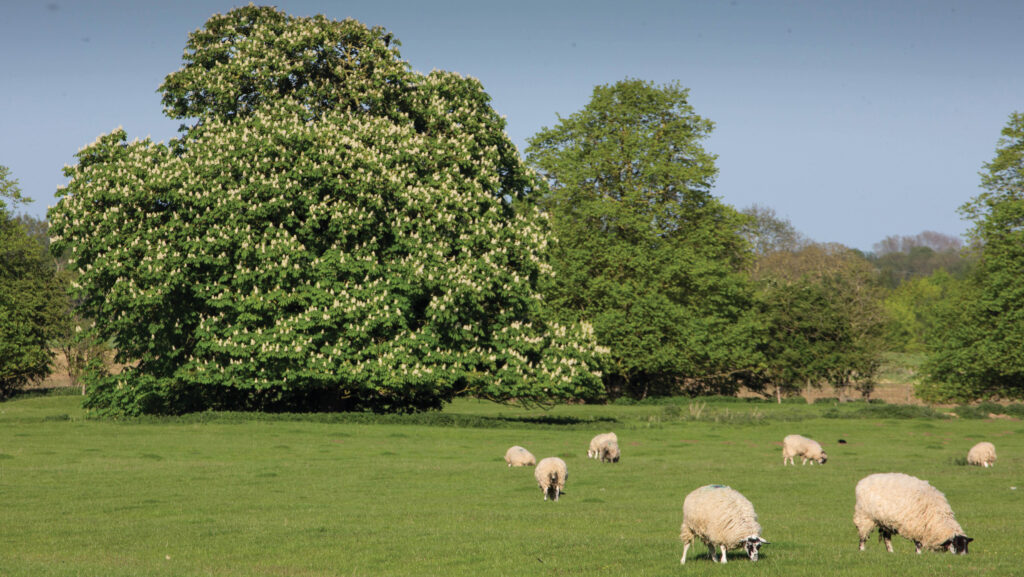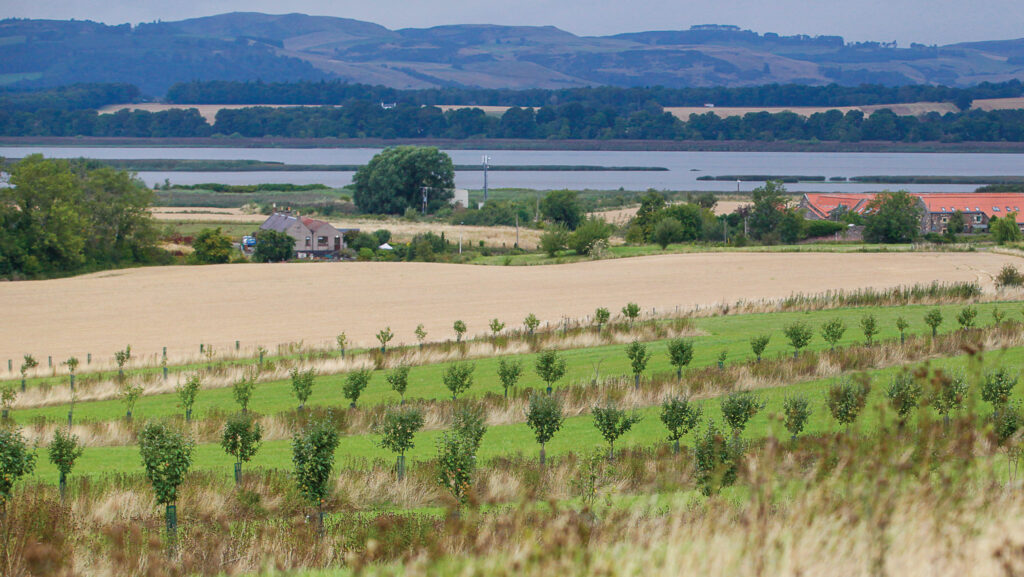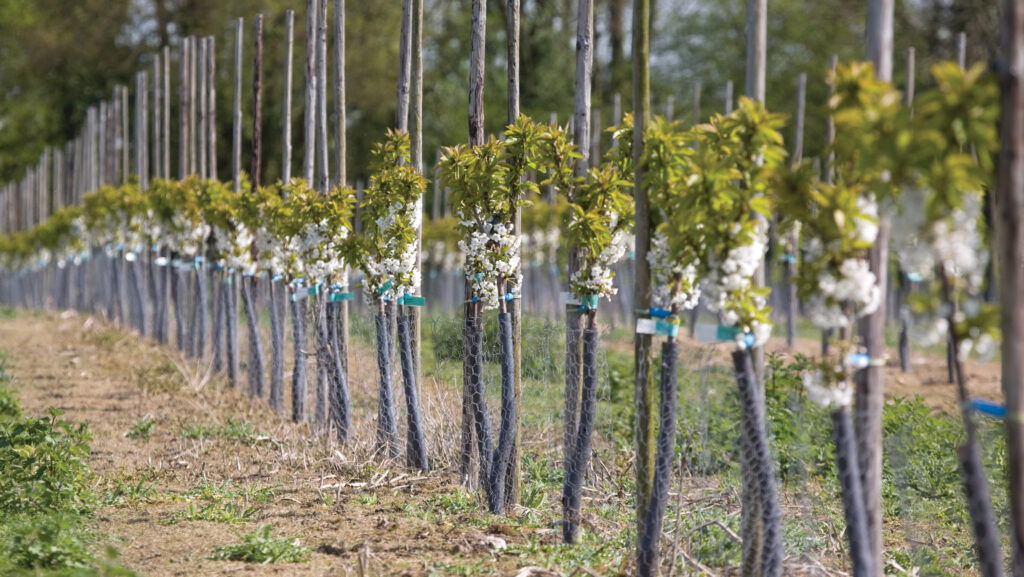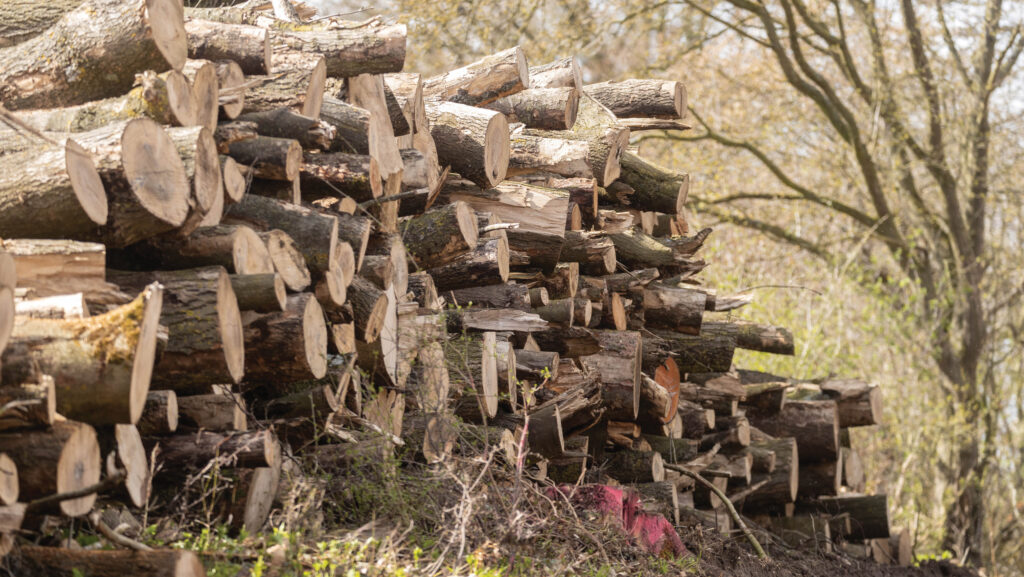The grant support available to landowners for tree projects
 © Tim Scrivener
© Tim Scrivener The push to encourage more UK landowners to plant trees has seen Defra and the devolved administrations committing more grants to woodland creation, and to maintaining existing plantings across a wide range of settings.
A recent Farmers Weekly webinar with the Forestry Commission demonstrated a high level of interest in woodland management, small scale plantings, orchards, wood pasture and parkland trees.
See also: Tree planting – benefits, grants and support
Here is a closer look at some of the options across the UK for these and other projects.
The level of payment differs between nations, but each has financial incentives to support the planting of a range of woodland types and sizes, and to maintain and reinvigorate established ones.
From grants for planting in-field fruit and nut trees – species that allow farmers to generate a diversified income – to payments for improving neglected woodland, there are numerous options to consider.
There is also some support for establishing tree nurseries to produce the saplings needed to supply these government-funded schemes.
Preparing for planting
Ground preparation, planting and protection methodology are often written into an approved scheme.
The size of the site often dictates whether landowners want to plant the area themselves or use external contractors, suggests Geraint Jones, forestry and farm woodland specialist at Farming Connect in Wales
If the work is being done in-house, he advocates discussing the timetable with the agent providing the advice and ensuring that time is accounted for within the farming timetable.
He suggests November, December and early January as the ideal months for planting.
Practical planting guides are also available, such as through the Woodland Trust and Coed Cymru.
When saplings arrive on the farm from a nursery, their care and maintenance should be a priority.
“Trees should immediately be heeled in to a secure location away from vermin and livestock,” Geraint recommends.
“This will protect the trees and stop the risk of tree roots drying out which will happen if they are kept in the bags they arrive in.”
Cell-grown trees, although more expensive, are an alternative option as they allow for quicker establishment as the roots are already protected by the growing medium.
Scotland
Improving neglected or poorly managed existing woodland
In Scotland, all government-funded woodland grants come under the umbrella of the Forestry Grant Scheme (FGS) which has two categories for woodland creation and six for managing existing woodland.
For support to improve any established woodland, Gareth Phillips, forestry development officer at Scottish Forestry, advises that funding is available under the Woodland Improvement and Sustainable Forestry Management categories.
As is the case for most forestry grants in Scotland, there is great competition for the available funding. The rates do not rise with inflation and haven’t done so since 2014.
Gareth suggests applicants submit their bids early, and to ensure they are robust.
“There is very strict scoring criteria, and when the budget gets tighter, the scoring gets higher, so the stronger the application the more chance it has of being approved,” he says.
Applications for support can be made not only for the current financial year, but also for the following two.
Creating woodland meadows
This falls under the Scottish government’s Agroforestry option which supports tree planting on agricultural pasture or arable land.
The big difference between this and woodland creation grants is the minimum planting requirement – 150 stems/ha compared to 1,600 stems/ha for woodland.
In Scotland, agroforestry doesn’t change the land use classification from agriculture, meaning applicants can retain farm support payments in perpetuity.
The grant rate for agroforestry was increased by about 50% last year, and is now more flexible, perhaps reflecting how the government believes many farmers could make this form of tree planting work in their systems.
There are two payment rates: for 150-200 stems/ha, the initial payment is £2,700/ha and an annual payment of £72/ha for five years; at 300-400 stems/ha, the capital element is £5,400/ha and the annual payment £126/year for five years.
Recreating or restoring historic parkland
Under the Woodland Improvement suite of grants, Gareth says woodland designed landscapes often score highly when applications are assessed.
For farms and estates with designed landscapes in a parkland setting, there are payments for maintaining and restoring these – for example, there are day rate payments for contractors to prune trees, or to replant where trees have failed.
“A lot of designed landscapes in Scotland were historically elm and ash, which are being decimated by disease,” Gareth explains.
“Funding is available to replace these with trees which have similar environmental benefits.’’
Fruit and nut orchards and in-field fruit and nut trees
Funding isn’t available for orchard creation, but there is provision in Scotland’s Agriculture and Rural Communities Bill for planting fruit and nut trees, so the funding situation could change if this passes into law.
Applications for in-field fruit and nut trees can, however, be made under the Agroforestry option as the guidance was updated in 2023 to include them.
Establishing a tree nursery to produce native species for sale
The Harvesting and Processing grant funds specialised equipment for forest tree nurseries, including tree seed supply businesses.
Gareth says a significant number of application approvals from this grant have supported forest nurseries.
“I would encourage anyone who is considering establishing a nursery to look at this grant,’’ he says.
Grants include 40% of the cost of new machinery, up to a maximum of £50,000.
If an applicant needs a grant for multiple purchases that exceed the £50,000 limit, applications can be made over successive years as there is no limit on how many times applications can be made.
This grant has created multiple jobs in the Scottish countryside and is therefore seen as value for money by Scottish Forestry.

© Scottish Forestry
Tree planting – practical tips for advice and planning
In Wales, the Farming Connect Advisory Service offers surgeries and advice as a first step.
The Woodland Creation Planning Scheme provides financial support for a woodland creation plan for an area covering at least 0.25ha.
In England, the Woodland Creation Planning Grant provides funding to land managers to help cover the costs of producing a UK Forestry Standard compliant woodland creation plan.
These are for eligible woodland proposals spanning a minimum of 5ha, which can be split into smaller blocks of a minimum of 0.5ha.
There is grant support in Scotland for getting a woodland creation plan processed and approved for a certain identified and mapped area where the trees are to be planted.
However, this relies on the planting being completed within the contract date.
Wales
Improving neglected or poorly managed existing woodland
Wales doesn’t have dedicated woodland management grants, but there is an expectation that a scheme with capital funding options could be created under the umbrella of the planned new Sustainable Farming Scheme.
What is currently available is the Woodland Investment Grant with money on offer to create, restore and enhance woodlands.
This is part of the National Forest for Wales programme and is jointly funded by the Welsh government and the National Heritage Lottery Fund.
A proviso is that these woodlands must have the potential to be part of the National Forest network.
Geraint Jones, forestry and farm woodland specialist at Farming Connect, says this means woodlands are well managed and have open access to people.
“Grant recipients will also be expected to give local communities the opportunity to get involved in woodlands and nature,” he says.
Creating woodland meadows
The Woodland Creation Planning Scheme is a potential source of funding, with a number of categories for landowners to choose from to fit with their objectives.
Similarly, there is the Small Grants Woodland Creation Scheme, with money available to plant woodland covering less than 2ha.
The Woodland Trust offers trees at a discounted price for these projects.
Recreating or restoring historic parkland
Restoring and enhancing historic parkland could be undertaken within the Agroforestry element of the Woodland Creation Scheme, which offers a capital payment of £1,600/ha for 80 trees/ha.
The scheme also pays for fencing and gates to be installed around tree planting areas and offers an annual payment of £30/ha for five years.
There are options available under the Small Grants Environment Scheme too.
Wales currently doesn’t offer funding for management work on existing trees.
Planting fruit and nut orchards and in-field fruit and nut trees
Up to £7,500 an applicant is available in each application window under the Small Grants Environment Scheme for fruit and nut trees under the Landscape and Pollinators option.
Establishing a tree nursery to produce native species for sale
There is potential for funding this under the Horticulture Development Scheme.
This scheme mostly supports existing commercial horticultural producers to develop their businesses by supporting investment in new equipment and technology.
It also, however, helps businesses enter new markets and increase local employment, so new businesses could feasibly apply.

© Tim Scrivener
Sourcing healthy trees
The health of saplings and trees can make or break a planting project.
To give the scheme the best start, Gareth advises visiting a few tree nurseries early in the project timetable.
Inspect the stock and decide on the species and size that you require, he says.
“It is a good idea to visit local nurseries as trees that are grown locally from local seed are often those that will adapt to the local environment.’’
England
Improving neglected or poorly managed existing woodland
Defra has a number of offers to create, manage and restore wood pasture and parkland as part of the Countryside Stewardship (CS) scheme, including capital items.
As part of its expanded Sustainable Farming Incentive (SFI) and CS Higher Tier offer, it says it has improved its offer this year by aligning the payment rates for lowland and upland wood pasture, and making the actions simpler and more flexible.
The minimum threshold has been reduced from 3ha to 0.5ha to make smaller woods eligible for funding.
The list of actions which attract payments has been expanded to include, for example, managing historic features in woodlands, and managing woodlands for flood and drought mitigation.
Annual payment rates for 10 years range from £212/ha for managing lowland or upland wood pasture and parkland to £544/ha for the creation of lowland or upland wood pasture.
Restoration of lowland or upland wood pasture and parkland attracts £371/ha a year, again for 10 years.
In addition, the most recent SFI 2024 announcement included payments for maintaining agroforestry. Actions for wood pasture and orchards will be published this summer.
Creating woodland meadows
There is no specific funding to help create woodland meadows, but Defra says some of the CS actions, such as creating wood pasture, can be used to support this.
Recreating or restoring historic parkland
Defra pays £371/ha for 10 years under the CS Higher Tier to restore existing uplands wood pasture and parkland that is in poor condition, on sites that support veteran trees or parkland features.
Planting fruit and nut orchards
There are two CS payment options – £264/ha in Mid and Higher Tier agreements for managing traditional orchards and £471/ha in the Higher Tier for creating traditional orchards, both for a period of 10 years.
To appeal to more landowners, Defra has expanded eligibility in the management option by reducing the age requirement for existing trees.
Instead of a third of the original trees needing to be over 25 years old, they now need be only over 10 years old.
The eligibility criteria for orchard creation has been expanded to take in any land which connects to an existing treescape.
Tree nurseries to produce native species
There is no grant currently open, but Defra has recently run the third round of its Tree Production Capital Grant, a scheme which provides funding support to nurseries and suppliers.
This can be used to invest in facilities and equipment to increase the quantity, quality, diversity and biosecurity of tree, seed, and sapling supply.
Up to £2.5m was most recently available, providing 50% funding for projects up to a maximum grant value of £175,000.
This can pay for new machinery such as transplanting systems and grading machines, improved polytunnel infrastructure and irrigation systems, and seed processing and storage equipment.
Improved water treatment systems and refrigeration equipment are also eligible.

© Tim Scrivener
Pies funding
In England, aside from government grant support, there is another source of funding that landowners can draw from to bring existing woodland back into active management and to create new wooded areas.
Protect Improve Expand Sustain (Pies) is funded by the Trees Call to Action Fund which has been developed by Defra in partnership with the Forestry Commission and administered by the Heritage Fund.
Farmers and landowners can receive free advice, including a site visit and customised report, plus ongoing online support and technical services.
The advice is delivered by independent woodland experts over three days and is worth up to £3,000 for each successful applicant.
Eligible landowners include those with existing woodland that do not have a current management plan in place, and/or any landowner interested in creating new woodland on their land.
The online application form can be found at sylva.org.uk/pies
